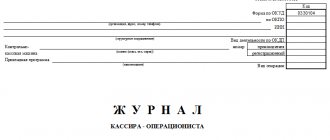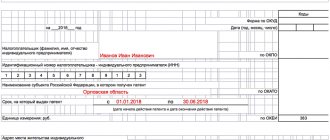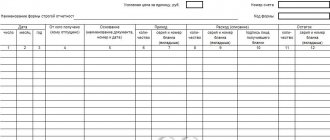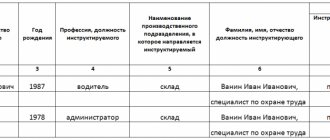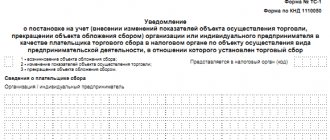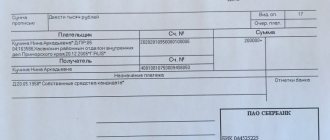The fire extinguisher logbook is an important document that is checked by the fire service when conducting fire inspections in small and large organizations. Unfortunately, the greatest demand for this document appeared after the tragedy in Kemerovo on March 25, 2018. It’s very sad that the Russian “until the thunder strikes” worked here.
- Form and sample
- Free download
- Online viewing
- Expert tested
FILES
In most companies, a fire extinguisher is the main means of containing fires and fires. And they can happen unexpectedly, at any moment. And to document the readiness to fight fire, a log of fire extinguishers is compiled. The document is needed to organize information and be able to control the acquisition, reloading and other nuances that relate to the storage and operation of fire fighting equipment.
Who fills it out
The head of the organization and heads of company departments, if any, are directly responsible for the timely completion and maintenance of the journal. However, in practice, these employees already have many responsibilities that cannot be delayed.
So, almost any employee (with the appropriate education) can fill out the log and be responsible for fire safety in the organization. In this case, it is important for the manager to sign an order or instruction appointing such a person from among the employees of his organization, or he will have to fill out everything himself.
BREAKING MAGAZINE OF FOOD PRODUCTS AND FOOD RAW MATERIALS
The log is necessary to control the quality of incoming products and compliance with their expiration dates.
According to clause 15.1 of SanPiN 2.3.6.1079-01, the head of the organization ensures the maintenance of rejection logs, but the form of the rejection log of food products and food raw materials is not given in this document. Therefore, specialists in public catering organizations have questions: is it necessary to keep this journal at all?
At the same time, sanitary rules that impose requirements for catering in general educational institutions, institutions of primary and secondary vocational education (SanPiN 2.4.5.2409-08), children's health camps (SanPiN 2.4.4.3155-13 and SanPiN 2.4.4.3048-13), medical organizations (SanPiN 2.1.3.2630-10), the form of such a journal is provided.
The need to carry out screening of incoming food products and food raw materials in other public catering organizations is determined by the requirements for the organization and conduct of production control (SP 1.1.1058-01 “Organization and conduct of production control over compliance with sanitary rules and the implementation of sanitary and anti-epidemic (preventive) measures" and Section XIV SanPiN 2.3.6.1079-01), which is carried out, among other things, by filling out the appropriate accounting forms.
An example of filling out a logbook for rejecting food products and food raw materials is given below.
SanPiN 2.3.6.1079-01 does not contain a list of food products and food raw materials that are subject to recording in the reject log. However, as a rule, only perishable products and raw materials are included in it.
The requirement to include perishable food products and food raw materials in the journal of rejection is enshrined in SanPiN 2.4.4.3155-13 “Sanitary and epidemiological requirements for the design, maintenance and organization of work of stationary organizations for the recreation and health of children.” Considering the fact that the requirements for catering in children's health camps are, as a rule, more stringent than for other catering establishments, and are justified by infectious safety, it is advisable to be guided by this requirement in other situations.
Since it is impossible to exclude the simultaneous receipt of various perishable products, the consumption of which is carried out over different periods of time, determined by the dates of their sale, it is advisable to create sections in the reject log for each product name (for example: milk; cottage cheese; butter; meat; chickens; eggs, etc. .d.). This will avoid confusion and clearly track product balances and deadlines for their sale.
Journal elements
The document consists of a cover and separate sheets, which are called operational passports for each fire extinguisher. It is more convenient to place the magazine horizontally. It is usually printed on standard A4 sheets.
The name of the organization is indicated on the cover (at the top), in the middle is the name of the document itself. In the lower right part of the cover are the start date and end date of the magazine. Moreover, the latter is indicated during the last check or when a new one is started. From the very beginning of filling out a document, an end date is rarely set. It is therefore a document that may not have a specific end date on the date of inspection.
Important! After the cover, the magazine contains separate operational passports for fire extinguishers, which are listed on the organization’s balance sheet and are physically present in a specific department.
A separate sheet of the log is represented by the same columns for all fire extinguishers, which should contain information about:
- The manufacturer of the product. Here it is enough to indicate the name of the organization, but it is also welcome to indicate address information.
- The number assigned to the fire extinguisher. Each of them is issued with its own operational passport. Even if the rest of the information in them is the same, they will differ precisely in the assigned number.
- The date the fire extinguisher was put into operation.
- Its serial number. This data can be obtained from the passport for each specific product. For example, MIG OP-4(3)-AVSE.
- Installation location. Here it is enough to indicate the number or name of the room in which the fire extinguisher is actually kept.
- Date of manufacture. This information is needed for timely replacement of content.
- Type and brand of the product being described.
- Brand and concentration of charged OTV. In most cases, this is Wexon.
There are separate lines for all these items, but they are not presented in table form. The tabular part is at the end of the operational passport. It includes:
- When and what type of fire extinguisher maintenance was carried out. This may include inspection during commissioning, replacement of contents, etc.
- Appearance and condition of equipment components.
- Mass. The entire object is weighed, including the filler.
- If the fire extinguisher is equipped with a pressure indicator, then the indicators on it.
- If the equipment is mobile, then what condition is the chassis in? If fire extinguishers are stationary, the absence of fire extinguishers is indicated in this column.
- What measures have been taken to eliminate possible deficiencies.
- Full name, position and signature of the employee who is responsible in the organization for fire safety and maintaining equipment in working condition.
One line should reveal the essence of one technological maintenance. It may also contain information about recharging fire extinguishers. But for this purpose it is better to create a special document for testing and recharging fire extinguishers, and put only links from it in the logbook (in the column “Elimination of deficiencies”).
Filling out the main section
A sample of filling out a fire extinguisher logbook includes the “Results of Maintenance” section.
It contains data on all checks to which the device has been subjected during its service life.
Once a year, the total weight of the fire extinguisher is assessed. Over time, it may lose some mass, which has a fixed value.
If the loss is greater than the set limit, this indicates a malfunction of the device.
In such a situation, it requires early recharging.
All information about the maintenance performed is reflected in a form consisting of 7 columns.
- The first column indicates the date of service.
- The second provides an assessment of the appearance and condition of the nodes. Depending on the results, one of the marks is given: excellent (if there is no damage and is in full working order), good (if the components are in good working order and there is minor damage to the body), satisfactory (the components are serviceable, but there is significant damage on the body that does not affect it functioning).
- The following is the total weight of the device, information taken from the label.
- The fourth column indicates the mass of the gas cylinder as stated in the passport (or pressure if the fire extinguisher is equipped with a pressure indicator).
- The fifth column contains information about the condition of the wheels and fasteners; it is filled out only for mobile fire extinguishers. In the case of other models, leave a dash.
- Then information is provided on methods to eliminate the identified deficiencies. If the work has not yet been completed or no faults have been found, leave a dash.
- In conclusion, the details of the person who conducted the inspection are indicated, his full name, position are entered, and his signature is affixed.
Before filling out this form, you must inspect the fire extinguisher. In the question of how to fill out a document, they are guided by general rules.
back to menu ↑
How many fire extinguishers do you need?
When initially equipping fire extinguishing equipment, the manager must take into account the standards that were developed specifically to reduce fire hazards in a particular organization. It is necessary to take into account the level of danger in a particular situation. Premises (all except commercial buildings) are divided into levels: A, B, C, D and E. D - the lowest fire hazard. A – accordingly, the highest.
The level of fire danger depends on:
- Materials from which the structure is constructed (as well as insulated, etc.)
- Building and floor plans.
- The presence or absence of explosive substances (even temporary).
The number of fire extinguishers must be calculated based on the area of the room or rooms used by the organization. In most cases, offices with no more than a dozen people need one standard model fire extinguisher. In this case, the fire extinguisher logbook will consist only of a cover and one passport of fire-fighting equipment.
Other forms for fire extinguishers
When a fire extinguisher has been inspected, in addition to keeping a log, you will need to fill out an inspection and inspection report.
The document lists information about the chairman and members of the verification commission.
Even with proper maintenance, the device sooner or later becomes unusable.
This may be due to damage to the housing or internal malfunction. This fire extinguisher needs to be written off.
In this case, call the employees of the service that serviced the fire extinguishers.
They inspect the device and draw up an inspection report, which reflects the reason for the write-off.
The disposal is recorded in the records, after which the fire extinguisher is sent to the service.
In its place, the organization undertakes to supply new equipment.
The sample for filling out a fire extinguisher logbook is not established by law.
However, there is a form that is filled out according to general rules.
Indicate the technical data of the device, list the characteristics identified during the inspection.
The head of the enterprise appoints a responsible employee who will be responsible for maintaining the log and servicing fire extinguishers.
back to menu ↑
Primary fire extinguishing agents
Types of fire extinguishers
The design of the fire extinguisher is also of paramount importance. There are:
- Air foam devices. They are filled with foam.
- Aquatic. Their filler is carbon dioxide.
- Gas fire extinguishers. They are filled at the factory with refrigerant.
- Powder.
- Mixed type.
Moreover, there are portable models, whose maximum weight is 20 kg, and there are mobile ones, with a powerful chassis. Their weight can reach 4 centners. According to regulations, the maximum distance that can separate a fire extinguisher and a probable source of fire is 20 meters. Accordingly, between two places where fire safety equipment is located is 40 meters. A diagram of placement standards with the type of equipment taken into account is placed in the first appendix to PPR No. 390.
Requirements
Anyone who fills out a fire extinguisher logbook must undergo fire safety training. This can be done in a specialized institution or in the organization itself, if there is a fire safety instructor. This is called fire-technical minimum courses.
Before putting into operation, all fire extinguishers must be tested in accordance with paragraph 4.3.5 of SP 9.13130.2009.
Fire extinguishers should not interfere with the possible evacuation of people from the premises. They also should not interfere with the technological processes occurring at the enterprise. Their proximity to heating devices is unacceptable.
Primary fire extinguishing agents must always have their own passport. From the latter, it is better to take information about the brand, type of fire extinguisher and its other technical characteristics and transfer it to the fire extinguisher logbook.
Logbook form
There is no single form to fill out, so control over fire extinguishing agents in an organization is carried out in any form, or the recommended version from SP 9.13130.2009 is used.
A representative of the fire service does not have the right to fine a manager for incorrect management of fire management. To avoid misunderstandings during the inspection, you should first agree on the recording form with the fire department.
The fire inspector can offer his own control option. If this does not happen and no response is received on the form, then you can choose any method of maintaining accounting documentation.
Free form
For fire extinguishers of any form, the following items must be included:
- Name of the fire extinguishing device.
- Application area.
- Factory specifications: product serial number and production date.
- Marks on the date of recharging.
- Signature.
- Note.
Recommended form
The recommended option for monitoring and maintenance of fire extinguishers is located in SP 9.13130.2009. The form includes the following items:
- Number assigned to the device.
- Date of start of operation.
- Equipment location.
- Model.
- Manufacturer.
- Serial number.
- Date of issue.
- OTB concentration.
- Results of maintenance.
- Information about the inspection and condition of the fire extinguisher.
- Weight.
- Pressure.
- Results of checking the chassis of the product (mobile fire extinguishers).
- Information about how to resolve reported problems.
- Authorized representative details and signature.
Is it necessary to have such a form?
The logbook for fire extinguishers, in accordance with existing legislation (specifically, paragraph 478 of the Fire Regulations adopted by Government Decree No. 390 of April 25, 2012), can be drawn up in a free (arbitrary) form. However, the laws clearly state the requirements that it must meet. The form available for download contains everything you need to comply with these requirements: details of the organization, timing of inspections of each fire extinguisher, etc.
Thus, despite the fact that the given form is not unified, its use will be optimal in any of the organizations, since it contains and describes all the fundamentally important points that inspectors from regulatory organizations pay attention to during inspections.
How to fill out the journal
The table is quite simple to fill out. Simply enter information about fire extinguishers and other fire extinguishers in the appropriate cells.
Step 1. In the header, indicate information about the organization, and also indicate the date when you started keeping the journal.
Step 2. In the first column of the table, indicate the serial number of the record.
Step 3. Information for filling out the next three cells (name, area of application, serial number and date of manufacture) can be found on the label.
Step 4. The last three recording cells are filled as needed, that is, when the memory bandwidth is recharged. In the penultimate cell you can specify the target date. And in the note - for example, the organization that did the recharging, or the warranty period, if it was issued.
Fire extinguisher installation algorithm
After the responsible manager purchases a primary fire extinguishing agent in the form of a fire extinguisher, he must conduct an initial inspection of it, describe it in the fire extinguisher logbook, and then install it.
The initial examination includes:
- Reading pressure gauge readings (if available).
- External inspection for damage, chips and other defects.
- Assessing the condition of the external coating of the cylinder.
- Monitoring the legibility of text in the instructions supplied with the equipment.
- Close visual inspection of the sprayer, nuts and other elements for damage.
- Monitoring the mass of the cylinder filler (if possible).
- Inspection of the integrity of the seal and the presence of a factory mark on the product.
It is important to keep in mind that the purchased fire extinguishing equipment must correspond to the area of the enterprise premises, their specific operation, and volumes.
Periodicity
During its lifetime, each fire extinguisher must first undergo inspection for commissioning, then it undergoes three types of inspections:
- Full. Usually carried out on the initiative of the manager, by a separate order.
- Planned annual. External inspection, inspection of trips, check for possible leaks, remove products with low pressure in the cylinders or those that have reached their fifth service life. Sometimes, if necessary, selective opening of powder products (at least 3% of the total quantity) is carried out to determine the condition of the filters, the composition of the waste agent (dispersity, the presence of lumps and the ability to destroy them, moisture content, flowability). If the requirements regarding these parameters are not met, then the entire batch of fire extinguishers for this period is replaced throughout the entire enterprise.
- Planned quarterly. They are relevant only for large manufacturing enterprises or organizations whose premises have a fire hazard class of A or B. There is nothing serious here: an external inspection, an inspection of the installation site.
Important point! The date of the last inspection is noted not only in the log, but also on the fire extinguisher itself.
To do this, tags are attached to them. If the equipment is carbon dioxide or powder, then, in addition to this information, the tag should contain the mass of the charge and the cylinder. Each equipment must be accompanied by an instruction manual. She will tell you which fire extinguisher needs to be checked. For example, the service life of OPAN-50M fire extinguishers is 10 years. But this does not mean that they do not need to be checked every year.
Larcona Global
The question of how to register a magazine is most often asked at the stage of implementing the idea of publishing a magazine. It does not matter whether it is a printed magazine or an electronic one.
In order for a magazine to be registered, first of all, you need to collect a package of documents necessary for this (which documents are required are specified in the laws governing media registration). Then you need to check the correctness of the information specified in the documents, their reliability and submit the documents to the body that carries out state registration of mass media.
How to register a journal and who has the right to do so—these two questions are of primary concern to the applicant. In accordance with the law, the founder or founders of the media can be a citizen or an association of citizens, as well as a legal entity and a government body. A person who has not reached the age of majority, is serving a criminal sentence in prison, or has been declared incompetent by a court does not have the right to register a media outlet. In addition, a media outlet cannot be founded by an association of citizens, a legal entity whose activities contradict current legislation, a person who has citizenship of another country, as well as a stateless person who does not reside in Russia on a permanent basis.
An application for registration of a magazine as a media outlet, as well as any media outlet whose products are to be distributed primarily throughout the country, beyond its borders, and also in several regions, is submitted to the central office of Roskomnadzor. If the magazine will be published only in one subject or even on the territory of one municipality, then the founder submits an application to the territorial office of Roskomnadzor. Within 30 days, the body that registers the media reviews the submitted documents and checks them, after which it issues a certificate of state registration of the media or refuses state registration.
Often the reason for refusal is errors made when filling out documents. In order not to be refused registration and to receive a certificate of registration of the magazine as a mass media on time, you can contact our company for help. Our specialists will fill out the registration application correctly and in accordance with the law, prepare all the necessary documents, submit them to the registration authority and receive a certificate of registration of the journal.
The founder (co-founder) of a mass media can be a citizen, an association of citizens, an organization, or a government body.
Cannot act as a founder:
a citizen who has not reached the age of eighteen, or is serving a sentence in prison by a court verdict, or is mentally ill, recognized by the court as incompetent;
an association of citizens, an enterprise, an institution, an organization whose activities are prohibited by law;
a citizen of another state or a stateless person.
The co-founders act as founders jointly.
Registration of a printed publication involves submitting the necessary documents to the registration authority, as well as paying a fee.
Registration is carried out in the central office of Roskomnadzor (Moscow) for the media, the distribution area covers 2 or more constituent entities of the Russian Federation. In other cases, registration of a printed publication is carried out in the territorial Office of Roskomnadzor at the place of distribution of the publication.
Registration of a printed publication involves submitting the necessary documents to the registration authority, as well as payment . To register a print media outlet, we need to submit the following documents:
1. Documents proving the identity and place of registration of an individual (for an applicant who is a citizen of the Russian Federation) - a notarized copy of the passport.
2. Notarized copy of SNILS.
3. Copies of constituent documents, certified in accordance with the procedure established by the legislation of the Russian Federation (for the applicant - a legal entity) - a copy of the charter.
4. Confirmation of payment of the duty.
At the initiative of the applicant, a document confirming that the individual is not serving a sentence in prison by a court verdict (for the applicant - an individual), or an extract from the unified state register of legal entities may be submitted to the federal executive body that registers mass media. (for the applicant - a legal entity). Our company prepares a package of necessary documents for mass media registration, submits it to the registration authority, receives a Certificate of Registration of the publication and transfers it to the client. The registration period is 1 month.
Our company prepares a package of necessary documents for mass media registration, submits it to the registration authority, receives a certificate of registration of the publication and transfers it to the Client.
Reload
To ensure that the internal contents of the equipment are always in order and that the fire extinguisher logbook always contains correct information, fire extinguishers must be periodically recharged. There is even a separate document about this - a log of testing and recharging fire extinguishers.
The duration of this recharge will depend on the type of substance filling the device. For water fire extinguishers, the recharge rate is once every 1 year, as for foam ones. Even if water with specialized additives is used, this rule always applies.
Recharging firefighting equipment every year is quite a hassle. If the manager (or the person responsible for fire safety) is not satisfied with this situation, then it is necessary to purchase carbon dioxide, powder fire extinguishers or equipment with freon for the safety of your premises.
In these three cases, fire extinguishers will have to be recharged no more than once every 5 years. However, you should monitor their condition and make notes on checks in the fire extinguisher log book with the same frequency - once a year.
Where is the error log in 1C?
There are several ways to track which errors users encountered while working. Most often they use the “Administration” menu, go to the “Maintenance” item and click “Registration Log”:
Fig.1 Path to the journal
Sign up
We invite you to a free webinar!
Service 1C: Employee Account. How to reduce to a minimum personal requests from employees to the accounting department and the HR department
October 13 at 11:00 Moscow time
1 hour
Sign up
You can also get to the log by using the general menu called “All functions”:
Fig.2 “All functions” menu
In addition, you can launch the journal from the configurator. To do this, open the “Administration” menu tab and select “Registration Log”:
Fig.3 Launching a log from the configurator
The easiest and fastest way is to add it to “Favorites” if you use the magazine frequently.
Fig.4 Adding to favorites
The location of log data is different for file and client-server databases. In the first case, the log files are located in the folder with the database in a separate directory “1Cv8Log”. If a server and client sites are implemented, then the error history and user actions are located on the server in a separate folder.
